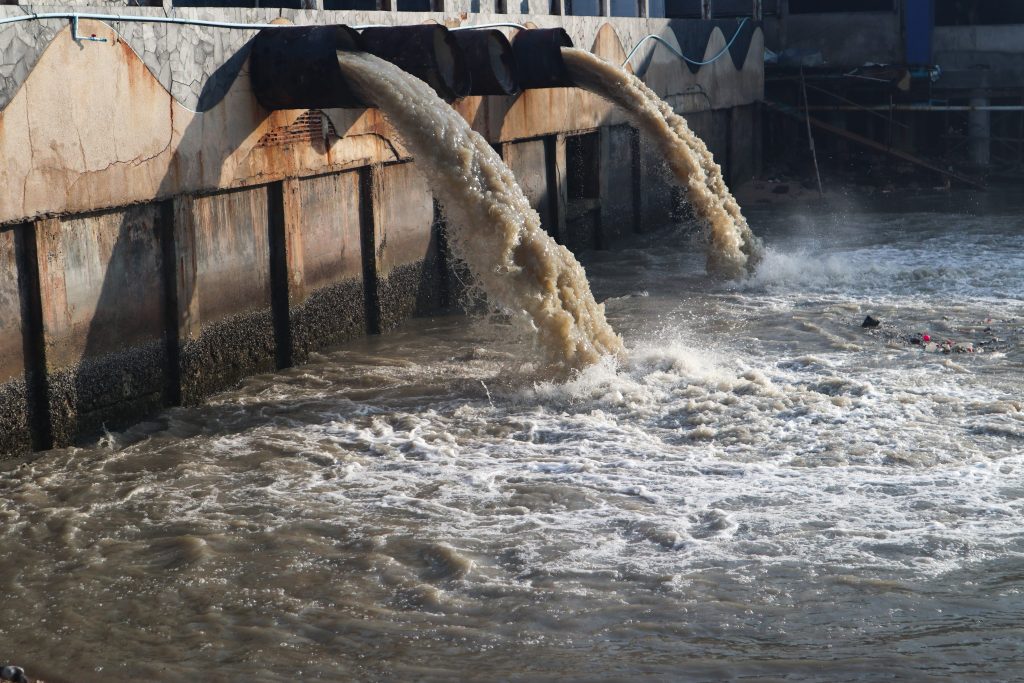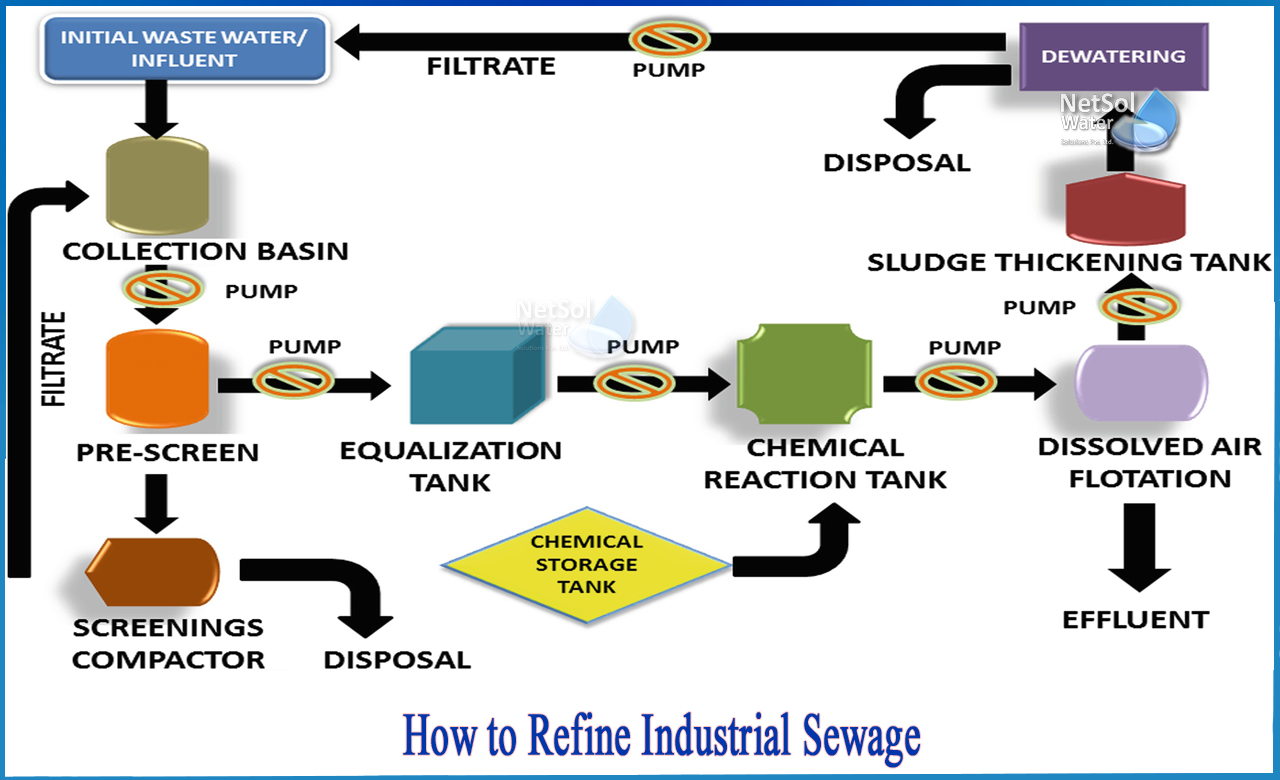Industrial Waste Water Treatment-- Industrial-Grade Water Filtration and Purification Solutions
Wiki Article
Innovations and Breakthroughs in Industrial Waste Water Therapy Technologies
The landscape of commercial wastewater treatment is undertaking a transformative shift, driven by technologies that boost both efficiency and sustainability. Arising innovations, such as membrane layer bioreactors and microbial fuel cells, are redefining impurity removal procedures while adding to power generation. Source recovery techniques are gaining traction, straightening with circular economic climate concepts. As regulatory requirements evolve, the combination of AI and artificial intelligence right into wastewater management systems promises to enhance procedures and guarantee conformity. Nevertheless, the complete effects of these developments increase essential questions regarding their scalability and long-lasting effect on industry methods.Summary of Waste Water Treatment Technologies
Wastewater treatment technologies incorporate an array of approaches created to eliminate pollutants from industrial effluents prior to their launch right into the setting. These modern technologies are essential for keeping environmental balance and ensuring conformity with environmental regulations. The primary categories of wastewater treatment include physical, chemical, and organic techniques, each serving distinctive objectives based on the nature of the impurities existing.

Organic treatment techniques use microorganisms to deteriorate raw material, making them particularly effective for organic-rich effluents. Methods like turned on sludge and biofilm activators harness the all-natural degradation capabilities of germs, causing substantial decreases in biochemical oxygen demand (BOD)
Advanced Filtration Methods
Advanced filtering methods stand for an essential advancement in the world of commercial wastewater therapy, boosting the performance of contaminant removal processes. Industrial Waste Water Treatment. These methods encompass a series of modern technologies, including microfiltration, ultrafiltration, nanofiltration, and reverse osmosis, which provide sequential obstacles for numerous fragment dimensions and chemical frameworksMicrofiltration and ultrafiltration make use of membrane layer systems to eliminate put on hold solids, germs, and bigger organic molecules, improving the quality of effluent prior to more therapy. Nanofiltration links the space between ultrafiltration and reverse osmosis, properly getting rid of organic compounds and divalent ions, hence lowering the lots on downstream procedures.
Reverse osmosis provides the highest degree of filtration by enabling only water and little molecules to pass through its semi-permeable membranes, making it ideal for redeeming high-grade water from commercial effluents. Recent innovations in membrane layer innovation, including the growth of more fouling-resistant and long lasting materials, have actually dramatically enhanced operational performance and decreased costs.
Integrating these advanced filtering strategies not only boosts the general treatment procedure but additionally adds to sustainability initiatives by allowing water reuse and source recovery in commercial settings. (Industrial Waste Water Treatment)
Organic Treatment Technologies

In addition, the advancement of engineered organic systems, such as membrane layer bioreactors (MBRs), integrates organic therapy with advanced membrane layer filtering. This integration enables greater effluent high quality and decreased impact, making it appropriate for space-constrained industrial centers. Developments in genetically crafted bacteria have additionally emerged, boosting the biodegradation of certain contaminants, such as drugs and heavy steels, that are typically testing to eliminate.
Additionally, the application of bioaugmentation strategies, where valuable microorganisms are presented to improve the existing organic therapy processes, has actually shown appealing lead to enhancing therapy performance. These technologies collectively symbolize a trend towards even more reliable and lasting biological therapy approaches that can adjust to the developing intricacies of industrial wastewater streams. As markets remain to prioritize ecological compliance, these organic innovations will play a critical role in wastewater administration.

Source Healing Methods
In commercial setups, the combination of resource recuperation techniques has come to be progressively vital for boosting sustainability and lessening waste. These methods concentrate on drawing out beneficial products and energy from wastewater streams, therefore changing prospective contaminants into multiple-use resources.One noticeable technique is nutrient healing, where nitrogen and phosphorus, frequently existing in excess in wastewater, are recorded and converted into plant foods. This not only lowers environmental effects but likewise gives a circular economic situation service for farming applications. Additionally, innovations such as anaerobic food digestion allow for the conversion of natural waste into biogas, a sustainable power source that can balance out fossil gas use in industrial procedures.
Furthermore, advanced filtering and membrane layer technologies assist in the recuperation of industrial spin-offs such as site web steels and salts. go to this site These recovered materials can be rehabilitated right into manufacturing processes, decreasing the requirement for virgin sources.
Future Fads in Waste Water Management
As markets significantly focus on sustainability, the future of wastewater management is set to undergo significant makeovers. Technological developments, such as expert system and artificial intelligence, will allow a lot more effective surveillance and monitoring of wastewater systems. These modern technologies can forecast upkeep demands, maximize therapy procedures, and boost decision-making, eventually minimizing functional prices and ecological influence.In addition, the assimilation of round economic situation concepts will certainly play a vital function in wastewater administration. Industries are expected to shift towards systems that not just deal with wastewater however likewise recuperate important resources, such as nutrients, water, and energy. This transition will certainly decrease waste and advertise the reuse of materials, aligning with international sustainability objectives.
Arising treatment techniques, such as membrane layer bioreactors and progressed oxidation processes, will better improve the efficiency of wastewater treatment, permitting better effluents suitable for reuse. In addition, governing frameworks are likely to advance, highlighting stricter criteria for wastewater discharge and encouraging industries to take on ingenious therapy options.
Conclusion
In final thought, the advancement of industrial wastewater treatment innovations shows a significant shift in the direction of enhanced efficiency and sustainability (Industrial Waste Water Treatment). Technologies in advanced filtering methods, organic therapies, and resource recovery techniques highlight the market's dedication to ecological stewardship.The landscape of commercial wastewater therapy is undergoing a transformative shift, driven by advancements that enhance both effectiveness and sustainability.Wastewater treatment modern technologies encompass a variety of methods created to remove pollutants from commercial effluents prior to their release into the atmosphere.Taking advantage of the power of organic procedures has actually led to considerable advancements in the therapy of commercial wastewater.Furthermore, the application of bioaugmentation methods, where helpful germs are presented to improve the existing organic therapy procedures, has actually shown promising results in improving therapy efficiency. These advancements collectively represent a trend towards even more lasting and effective biological therapy techniques that can adjust to the developing complexities of commercial read this post here wastewater streams.
Report this wiki page